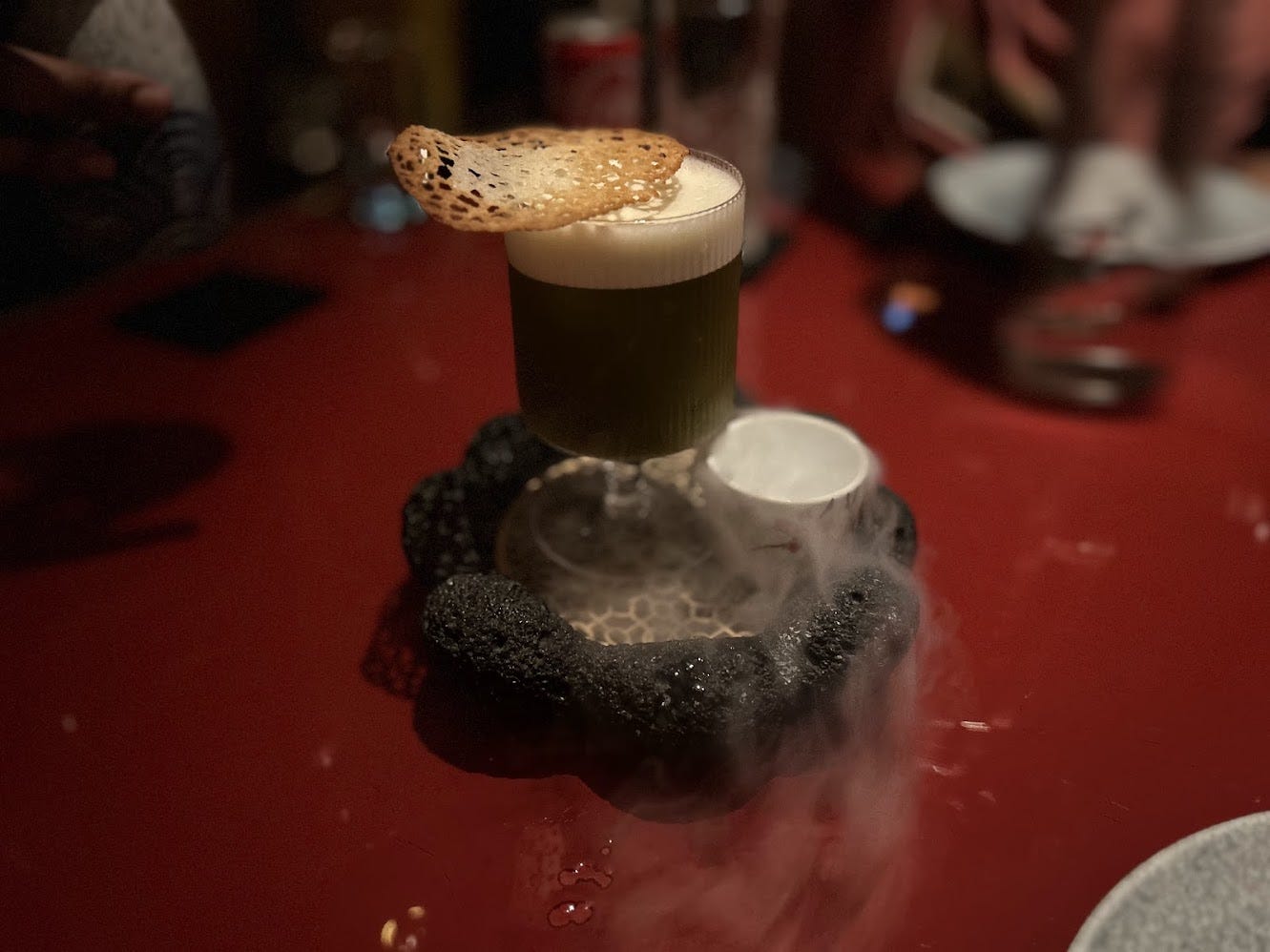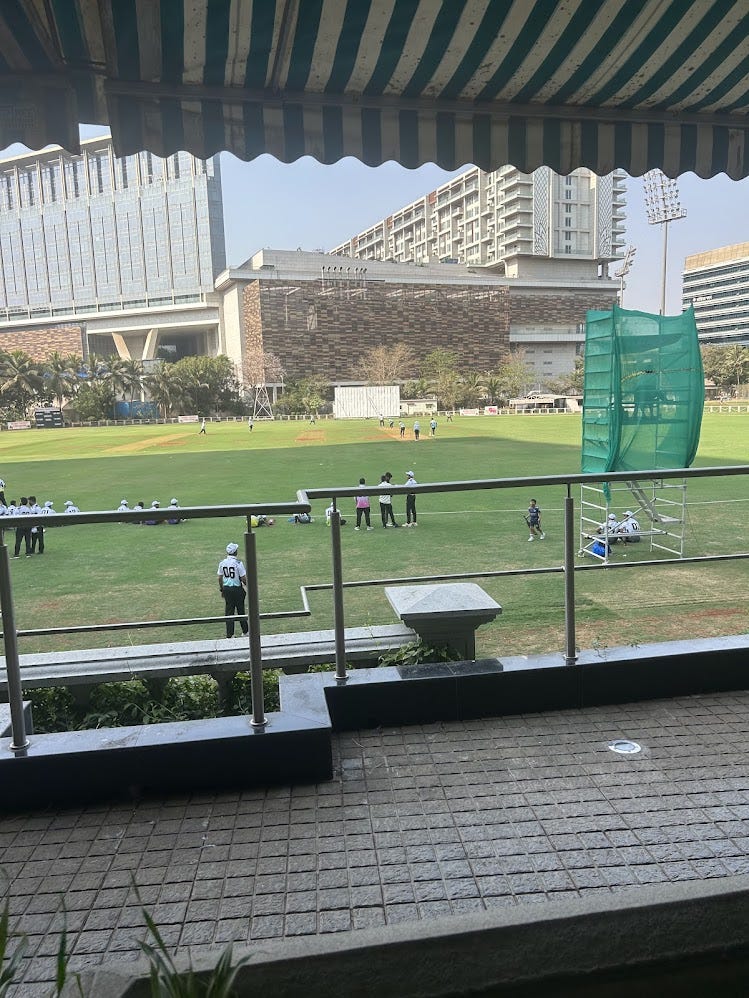Big Fat Zubai Wedding (Part 2)
Bombay is like NYC, but like everyone is Indian
I touchdown in Bombay, and for the first time, I have to fill out a form meant for ‘foreigners’. Some context: this is my first time traveling to India with my American passport. I consider myself a Bombay kid, despite only having spent ages 0-6 in this city. It's odd standing in line with Australians, Brits, and Northern Europeans in the "Indian E-Visa" line.
I’m standing at a booth by immigration, entering my passport number and a slew of other details onto an index card-sized form, and the red, white, and blue are coursing through my veins.
I can almost feel Abraham Lincoln and Thomas Jefferson’s hands on my shoulders as I, an American, fill out this form.
Then I get in front of an immigration officer who shares my skin color. He had asked the Norwegian lady in line before me the purpose of her trip to India. He omits this question when it’s my turn and stamps my five-year tourist visa without a word. As the sliding doors to the airport opened, the heat and humidity hit me like a truck. I seek refuge in the Uber and marvel at how alive this city feels, even at 4 a.m.
I go up the elevator of my Uncle's apartment building and knock on my uncle’s front door. He was extremely surprised to see me; I was supposed to skip out on this trip. I sleep for a few hours and wake up to a cup of tea, handed to me by the maid who has known me since I was a child. While this might sound incredibly douchey, the reality of (upper-middle-class) Indian life is comfort. You truly don’t have to lift a finger unless you want to. I sip the tea and motivate myself to take a shower.
Bombay isn’t best described as a collection of tourist attractions, scenic outlooks, or historical landmarks. It’s better described as a collection of moments — moments you really can't experience anywhere else.
Let me set the scene:
My aunt is the principal of a school in suburban Mumbai. She takes me on a tour that reminds me of my childhood. Kids aged 5-15 wearing collared white shirts, with the school’s emblem on the breast pocket, a standard pair of khakis, and a brown belt. She walks me through the corridors, and people bow to her.
“Good morning Principal Ma’am.”
She shows me the patch of land where they hold soccer practice. It doesn’t have green grass but is the largest patch of open land I’ve seen in this mind-bogglingly dense city for quite some time. Then we go up to the roof where there’s a basketball court. The best part is that while playing, you’d have the backdrop of the city around you.
Sitting in an authentic Maharashtrian restaurant, crammed into the tightly packed AC section, I tell the waiter to bring me vada pav. His acknowledgment is nothing more than a subtle nod.
Sitting in a Mercedes SUV, heading to a Japanese restaurant, stuck in traffic I turn left and see an auto rickshaw. The driver next to us is watching a YouTube video unbothered by the chaotic traffic. A woman in a burka is sitting in the back of the rickshaw, trying to keep her kids from jumping out. A stark juxtaposition of the wealth inequality and variance in the quality of life that this city offers.
Inside the Japanese restaurant, I see high ceilings, young families, and Bollywood-adjacent celebrities. I look at the menu, divide the prices by 80, and raise my eyebrows at how expensive everything is. The AC is perfect — it feels like I’m sitting in a crisp 67-degree room, a miracle given that it’s 103°F outside. I’d expect nothing less from Gauri Khan’s (Shah Rukh Khan's Wife) restaurant.
At the Mumbai Cricket Association Club, I sit at a table overlooking an amateur cricket match. We order coffee; mine arrives premixed with milk and sugar. In India, unless you specifically say you want black coffee, they’ll assume you want milk and sugar by default.
At a café in Bandra — think the West Village of Manhattan, Bombay-ified — I sit with my two cousins.
Around us are people who look even more Bollywood-adjacent, but if you ask them, they’ll probably tell you they aren’t in the movies. They work for their dad’s steel, textile, or import-export business (nepotism is big in this city).
There is a Sikh family celebrating a birthday at a table next to us. The Sikh/Punjabi people in Bombay look and sound like my parents and grandparents. And it makes sense.
My grandparents fled Pakistan after the Partition. Sikh families from Islamabad, Rawalpindi, Lahore — they all had to leave and find new lives elsewhere. The Sikh families of Bombay, like mine, are three-generation natives of this city on the bay: descendants of grandfathers who arrived seeking a better life.
Now, it’s time to leave.
Time to go to a new city — the crown jewel of the Gulf.
It’s time to go to Zubai.
-Raj




